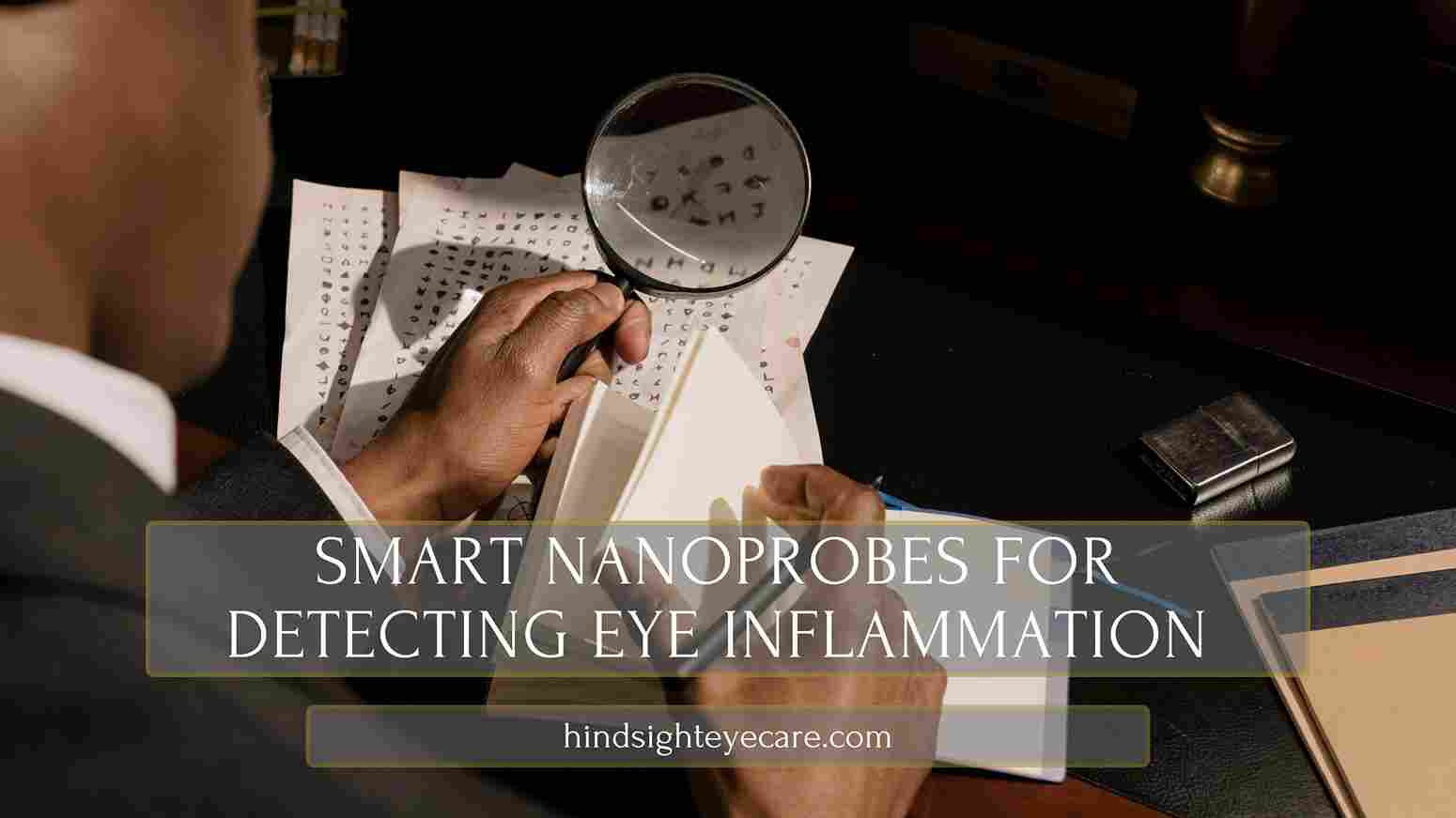Eye inflammation, a common yet potentially serious condition, has long challenged healthcare providers in achieving accurate and timely diagnosis.
The emergence of Smart Nanoprobes represents a groundbreaking advancement in ophthalmic diagnostics, offering unprecedented precision in detecting and monitoring inflammatory responses within the eye. These microscopic sensors are revolutionizing how we approach ocular health monitoring.
Smart Nanoprobes
Smart Nanoprobes are sophisticated molecular sensors designed at the nanoscale level, specifically engineered to detect and report inflammatory markers in ocular tissues. These tiny technological marvels combine advanced materials science with biological recognition elements, creating tools that can identify inflammation at its earliest stages.
The Architecture of Modern Nanoprobes
The construction of Smart Nanoprobes involves careful integration of various components. At their core, these probes contain biocompatible materials that can safely interact with delicate eye tissues. The outer layer typically features specialized coating materials that prevent immune system recognition while maintaining sensitivity to inflammatory markers.
Working Mechanism
When introduced into the eye, Smart Nanoprobes actively seek out specific molecular signatures associated with inflammation. Their design allows them to respond to changes in the local environment, such as shifts in pH levels, presence of inflammatory cytokines, or increased oxidative stress markers.
Clinical Applications
The implementation of Smart Nanoprobe technology in clinical settings has opened new possibilities for both diagnosis and monitoring. Healthcare providers can now detect inflammation before visible symptoms appear, enabling earlier intervention and potentially better outcomes.
Early Detection Benefits
Early detection through nanoprobe technology offers several advantages:
- Prevention of severe complications
- Reduced treatment duration
- Lower healthcare costs
- Better patient comfort
- More precise treatment targeting
Real-time Monitoring Capabilities
Modern Smart Nanoprobes excel in providing continuous, real-time data about inflammatory conditions. This constant monitoring allows healthcare providers to:
- Track treatment effectiveness
- Adjust medication dosages promptly
- Predict potential flare-ups
- Document recovery progress
- Identify triggering factors
Safety Considerations
While nanoprobe technology shows immense promise, safety remains a paramount concern. Extensive research has demonstrated the biocompatibility of modern nanoprobes, with key features including:
Here you like Quantum Dots Technology for Eye Disease Screening
- Non-toxic materials
- Biodegradable components
- Minimal tissue interaction
- Controlled clearance from the eye
- No long-term accumulation
Future Developments
The field of Smart Nanoprobes continues to evolve rapidly. Current research focuses on:
Enhanced Sensitivity
Scientists are working to improve detection thresholds, allowing for identification of even smaller changes in inflammatory markers. This increased sensitivity could help identify conditions before they become problematic.
Multi-marker Detection
New generations of probes can simultaneously monitor multiple inflammation indicators, providing a more comprehensive picture of eye health.
Integration with Smart Devices
Development of smartphone-compatible systems for reading and interpreting nanoprobe signals is underway, potentially making monitoring more accessible.
Practical Implementation
The practical application of nanoprobe technology in clinical settings requires consideration of several factors:
Training Requirements
Healthcare providers need specialized training to:
- Properly administer the probes
- Interpret results accurately
- Monitor patient response
- Handle potential complications
Cost Considerations
While initial implementation costs may be high, the long-term benefits often justify the investment through:
- Reduced treatment complications
- Fewer emergency interventions
- More efficient resource utilization
- Better patient outcomes
Challenges and Solutions
Current Limitations
Despite their promise, Smart Nanoprobes face several challenges:
- Storage stability
- Cost of production
- Standardization of readings
- Integration with existing systems
Ongoing research addresses these limitations through:
- Improved storage solutions
- Streamlined manufacturing processes
- Development of standardized protocols
- Enhanced integration capabilities
Patient Education
Successful implementation of nanoprobe technology requires proper patient education, including:
- Understanding the monitoring process
- Recognizing warning signs
- Following up appropriately
- Maintaining compliance with monitoring schedules
Conclusion
Smart Nanoprobes represent a significant leap forward in ophthalmic diagnostics. Their ability to provide early, accurate detection of eye inflammation marks a new era in eye care. As technology continues to advance, we can expect even more sophisticated applications and improved patient outcomes. The integration of these tools into standard medical practice promises to transform how we approach eye inflammation detection and treatment.
Frequently Asked Questions (FAQs)
What exactly are Smart Nanoprobes and how do they work?
Smart Nanoprobes are microscopic sensors designed to detect inflammation in eye tissue. They work by responding to specific molecular markers associated with inflammation, producing measurable signals that healthcare providers can monitor and interpret.
Are Smart Nanoprobes safe for use in the eye?
Yes, Smart Nanoprobes are designed with biocompatible materials and undergo rigorous safety testing before approval for clinical use. They are specifically engineered to be non-toxic and cause minimal disruption to eye tissue.
How long do Smart Nanoprobes remain active in the eye?
The duration of activity varies depending on the specific type of probe used, but most modern Smart Nanoprobes are designed to remain active for several hours to days before being naturally cleared from the eye.
Will I feel the Smart Nanoprobes in my eye?
No, due to their microscopic size, patients typically cannot feel the nanoprobes once they are administered. They are much smaller than contact lenses and don’t cause physical discomfort.
How much does Smart Nanoprobe testing cost?
Costs vary by location and specific application, but many insurance providers are beginning to cover these tests due to their preventive value and potential to reduce long-term treatment costs.




